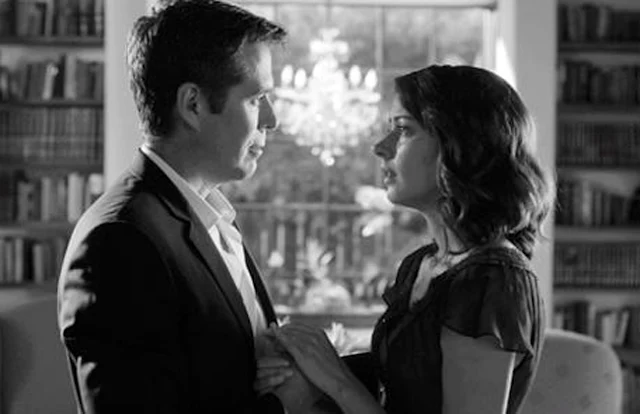 |
| James Cagney in The Public Enemy |
Cast: James Cagney, Edward Woods, Jean Harlow, Joan Blondell, Donald Cook, Leslie Fenton, Beryl Mercer, Robert Emmett O'Connor, Murray Kinnell, Mae Clarke, Mia Marvin.
Screenplay: Kubec Glasmon, John Bright, Harvey F. Thew.
Cinematography: Devereaux Jennings.
Art direction: Max Parker.
Film editing: Edward M. McDermott.
James Cagney has always seemed to me the movies' greatest loner, and the film that made him a star bears that out. The scene that brings it home for me is the one in which Cagney's Tom Powers is hiding out from the rival mob, and the woman named Jane (Mia Marvin) who looks after him gets him drunk and seduces him. In the morning, when he remembers that they had sex, he's shocked and slaps her, then storms out of the hideout. It's a less famous scene than the one in which he shoves a grapefruit in Mae Clarke's face, but that's partly because the scene with Jane was cut by the censors after the Production Code went into effect; it was restored only after the movie made it onto video. The two scenes are similar in suggesting that although Cagney's characters aren't exactly chaste, they don't connect with women except for their mothers, like Beryl Mercer's Ma in
The Public Enemy or Margaret Wycherly's Ma Jarrett in
White Heat (Raoul Walsh, 1949). Almost every major leading man of the 1930s and 1940s can be identified with his on-screen teamwork with a leading lady (or two): Cary Grant with Katharine Hepburn, Spencer Tracy likewise, James Stewart with Jean Arthur or Margaret Sullavan, Clark Gable with Jean Harlow or Joan Crawford, Gary Cooper with Barbara Stanwyck or Marlene Dietrich, and so on. But Cagney never struck sparks with any of his leading ladies. He seems too coiled and defensive to give up any part of himself to a woman. In
The Public Enemy, he's matched with Harlow, who does her best to thaw him out, but their scenes are not particularly memorable. In his private life, Cagney was notable for having married only once and having stayed married from 1922 till his death in 1986, without rumors of extramarital dalliance, something of an anomaly in Hollywood.
The Public Enemy uses this enclosed quality of Cagney's to good effect, and it's a tribute to whoever made the decision to give him the lead -- claimants include director William A. Wellman and producer Darryl F. Zanuck -- after initially casting him in the secondary role of Matt Doyle, played by the now mostly forgotten Edward Woods. It's largely thanks to Cagney that
The Public Enemy still hold up today, even though it has some of the stiffness and uncertainty of early talkies, especially when it comes to dialogue. Robert Emmett O'Connor, for example, who plays Paddy Ryan, tends to introduce long pauses between sentences when he's delivering his lines, as if afraid that the audience won't keep up with what he's saying.









